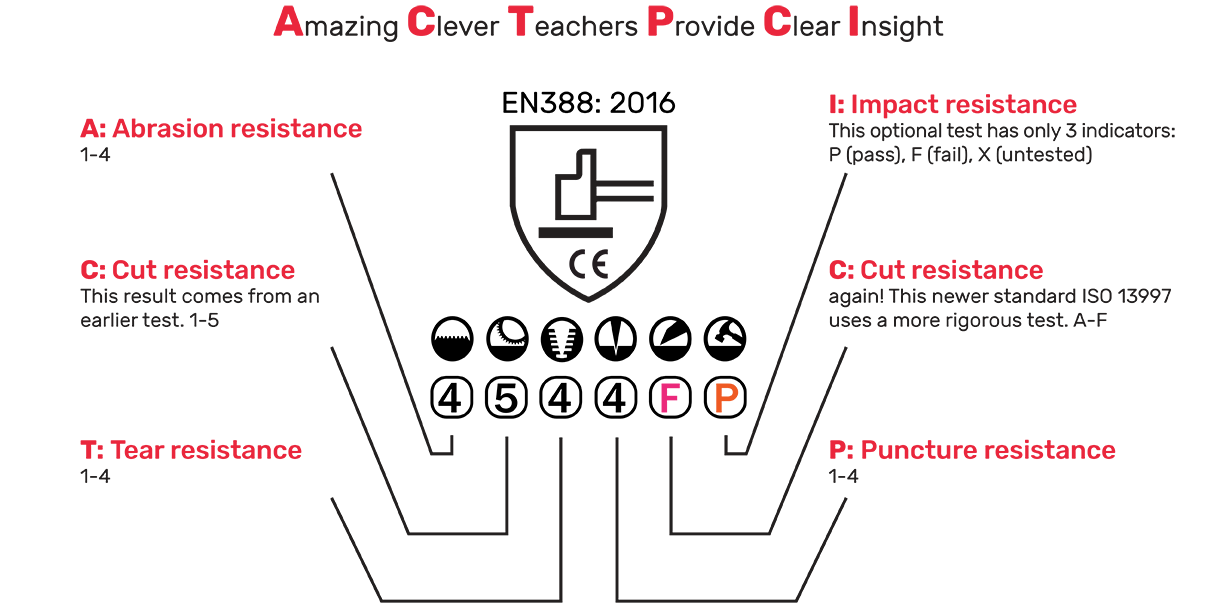
The Ultimate Guide to Cut-Resistant Gloves
When it comes to workplace safety, understanding the level of protection your gear offers is crucial, especially in environments where the risk of cuts and lacerations is high.
If you're looking for the best protection to keep your hands safe at work, understanding the different levels of cut-resistant gloves is key. Read on to find out about the various cut levels available and how to select the right gloves based on the needs of your tasks.
If you're looking for the best protection to keep your hands safe at work, understanding the different levels of cut-resistant gloves is key. Read on to find out about the various cut levels available and how to select the right gloves based on the needs of your tasks.
Cut Level A: Basic Protection
Cut Level A gloves provide the lowest level of cut resistance and are designed for environments with minimal hazards, such as paper cuts or handling small, non-sharp components.
These gloves are ideal for services or light assembly work where the risk of severe hand injuries is relatively low.
If your daily routine includes general handling of materials that do not pose significant cut risks, Level A gloves might just do the trick!
If your daily routine includes general handling of materials that do not pose significant cut risks, Level A gloves might just do the trick!
For Low Cut Hazards
EN388 measured in newtons: ≥2N
ANSI measured in grams: 200-499g
EN388 measured in newtons: ≥2N
ANSI measured in grams: 200-499g
Worksafe N800
Cut Level B: Light to Moderate Cut Hazard
Moving up the scale,
Cut Level B gloves offer a slightly higher level of protection and are suitable for handling materials that might have sharper edges.
Common applications for these anti-cut gloves include light assembly, packaging, and basic construction tasks where the cut risk is more pronounced but not overly hazardous. For those in industries like light automotive maintenance or packaging, Level B gloves provide a good balance of dexterity and protection.
Common applications for these anti-cut gloves include light assembly, packaging, and basic construction tasks where the cut risk is more pronounced but not overly hazardous. For those in industries like light automotive maintenance or packaging, Level B gloves provide a good balance of dexterity and protection.
For Light Cut Hazards
EN388 measured in newtons: ≥5N
ANSI measured in grams: 500-999g
EN388 measured in newtons: ≥5N
ANSI measured in grams: 500-999g

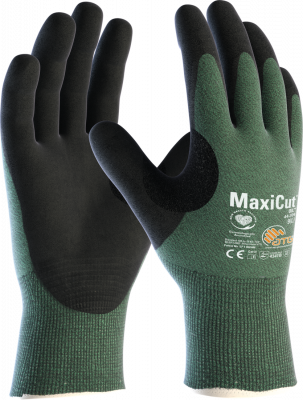
ATG Maxicut 44-304
Cut Level C: Moderate Cut Protection
For handling materials with moderate sharpness under more considerable force,
Cut Level C gloves will be a good fit.
These cut-resistant gloves are a popular choice in sectors such as construction, automotive assembly, and maintenance, where the risk of cuts is frequent yet manageable. They provide enhanced protection without sacrificing the flexibility needed for precise tasks.
For Light to Medium Cut Hazards
EN388 measured in newtons: ≥10N
ANSI measured in grams: 1-1.499kg
EN388 measured in newtons: ≥10N
ANSI measured in grams: 1-1.499kg
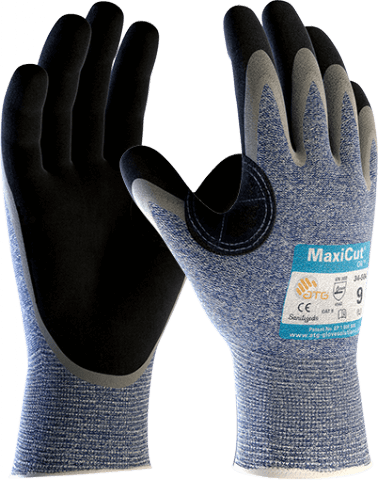
ATG Maxicut 34-504
Cut Level D: High Cut Protection
In environments where the risk involves handling glass or metal with sharp edges,
Cut Level D gloves are essential.
These protective gloves are engineered for high-cut hazards, making them indispensable in industries like glass manufacturing, metal fabrication, and heavy assembly. For workers in these fields, Level D gloves are not just a precaution but a necessity to prevent severe injuries.
For Medium Cut Hazards
EN388 measured in newtons: ≥15N
ANSI measured in grams: 1.5-2.199kg
EN388 measured in newtons: ≥15N
ANSI measured in grams: 1.5-2.199kg
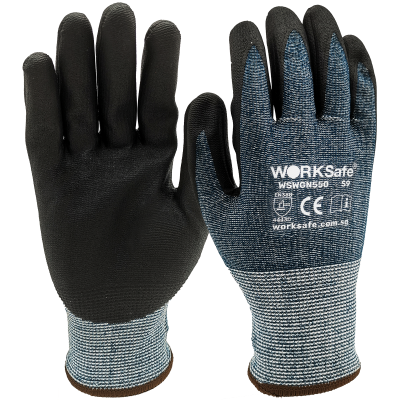
Worksafe N550
Cut Level E: Very High Cut Protection
Cut Level E gloves are designed to offer very high protection for handling extremely sharp materials under high force. Ideal for heavy metal stamping, handling sharp heavy materials, and other high-risk tasks, these gloves are crucial where the potential of severe cuts is prevalent.
If your job involves exposure to such hazards, investing in Level E gloves can provide the peace of mind that comes with maximum protection.
For High Cut Hazards
EN388 measured in newtons: ≥22N
ANSI measured in grams: 2.2-2.999kg
EN388 measured in newtons: ≥22N
ANSI measured in grams: 2.2-2.999kg
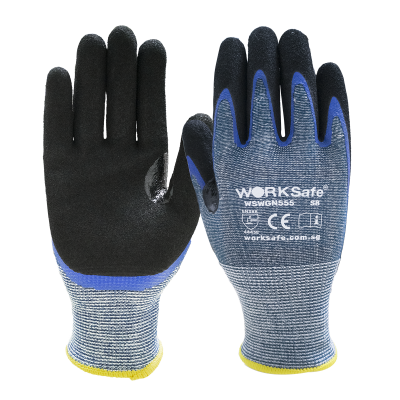
Worksafe N555
Cut Level F: Maximum Cut Hazard
At the top of the scale,
Cut Level F gloves offer the highest level of protection available, tailored for the most extreme conditions.
This category is necessary for jobs involving sharp machinery and high-pressure conditions where the risk of severe injury is significant. For those working in high-stakes environments, Level F gloves are indispensable, providing unparalleled protection and safety.
This category is necessary for jobs involving sharp machinery and high-pressure conditions where the risk of severe injury is significant. For those working in high-stakes environments, Level F gloves are indispensable, providing unparalleled protection and safety.
For Higher Cut Hazards
EN388 measured in newtons: ≥30N
ANSI measured in grams: 3-3.999kg
EN388 measured in newtons: ≥30N
ANSI measured in grams: 3-3.999kg

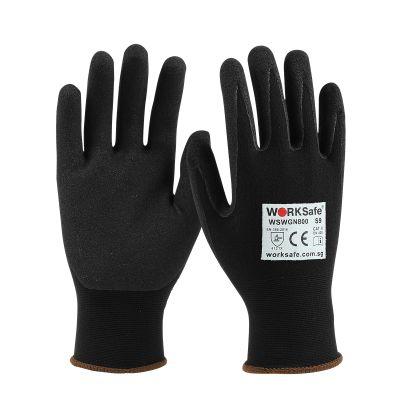
Worksafe N600
What are the Best Cut Resistant Gloves?
While it might be tempting to default to the highest level of cut resistance, the best protective gloves are those that match the specific hazards of your workplace. Choosing gloves based purely on a cut level without considering the specific needs of your task can lead to overprotection, underprotection, or unnecessary discomfort, which will only make performing your task more difficult.




Get the Best Cut-Resistant Gloves for Your Needs
Ready to find your perfect match? Trust Safety, your dependable industrial safety equipment supplier with a stellar range of protective gloves designed to meet any challenge you face in your industry. Browse through our collection and find cut-resistant and anti-cut gloves in Singapore that not only fit you like a second skin but also meet the needs of your day-to-day duties.
Know your EN388 Standards for Cut-Resistant Gloves
Workplace injuries, particularly cuts, are common. Using the right cut-resistant gloves is crucial for safety. The EN388 standard helps identify the level of cut protection provided by the gloves.
